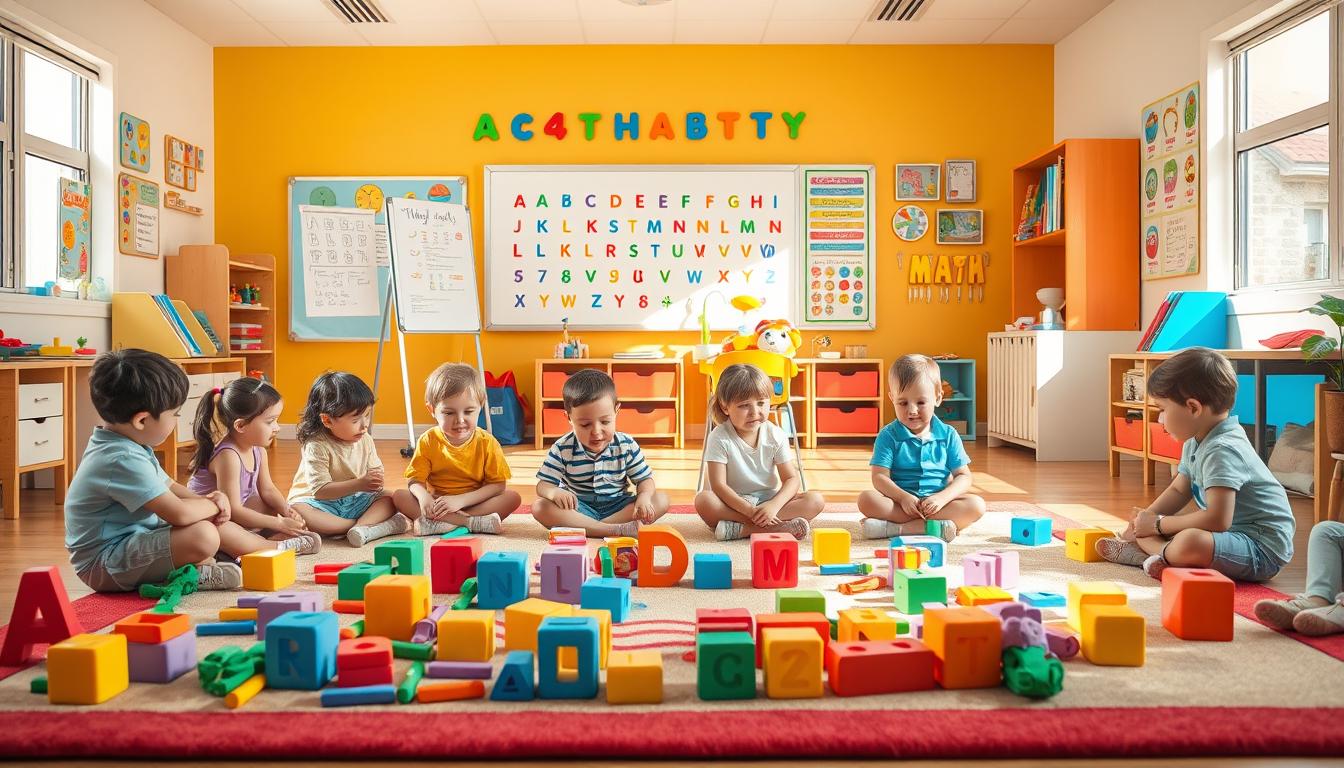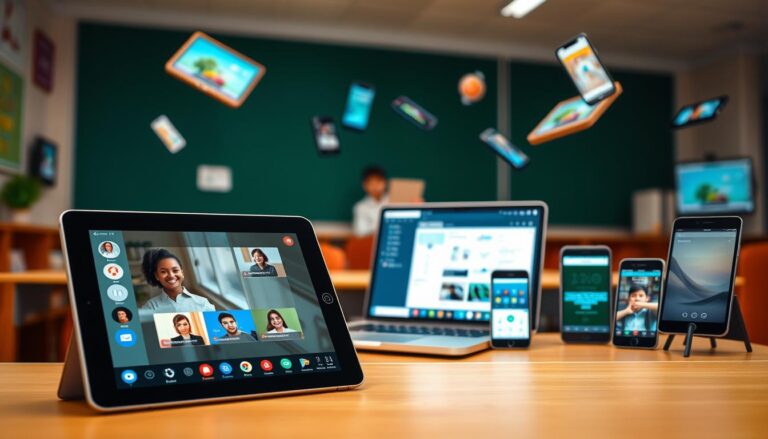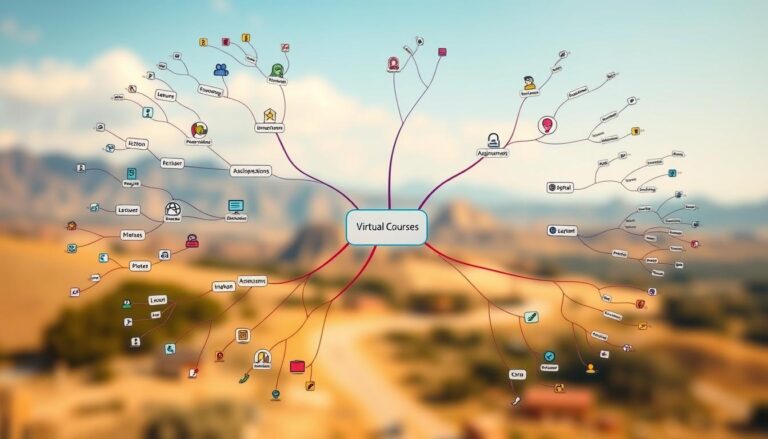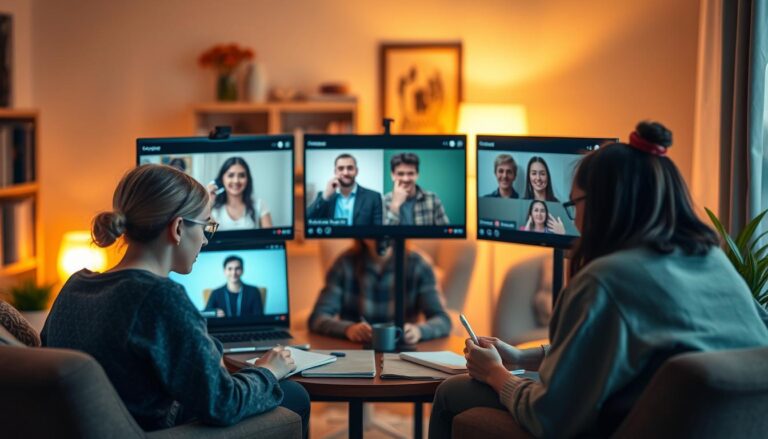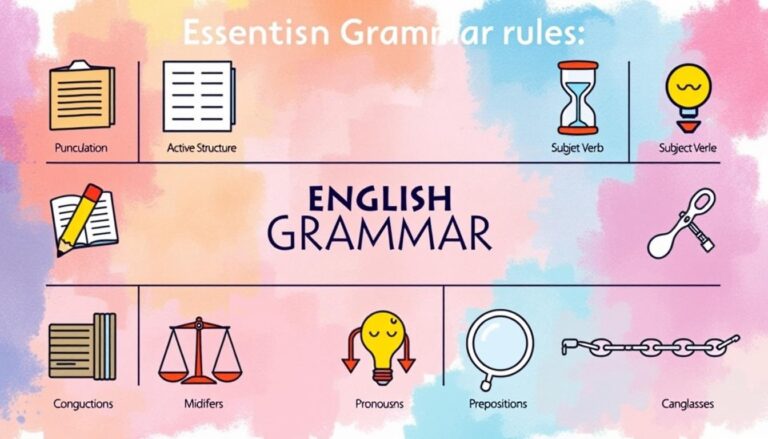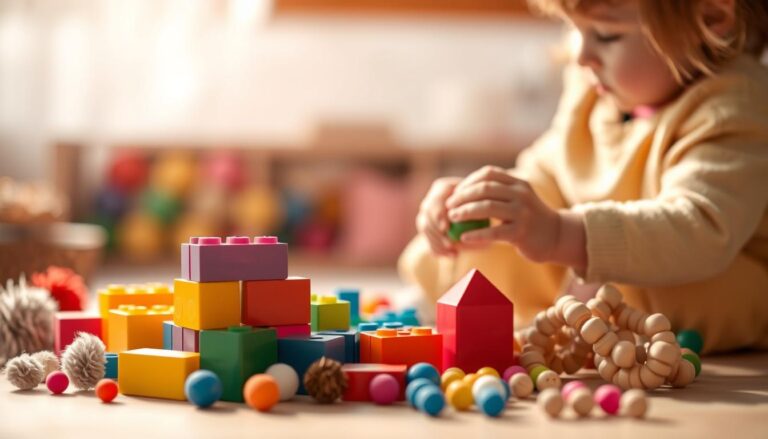Alphabet Learning Games for Young Children
Did you know that the way children learn their ABCs can shape their future literacy skills? Early exposure to letter recognition is more than just memorization—it’s the foundation for reading, writing, and communication. But how can we make this process both fun and effective?
We believe that learning should be a joyful experience. Our collection of interactive methods is designed to spark curiosity and creativity in young minds. From playful games to hands-on crafts, every child can find a way to connect with letters in a way that suits their unique learning style.
These activities are not just about teaching kids to write letters; they’re about building confidence and setting the stage for academic success. By blending education with entertainment, we ensure that every step of the journey is engaging and meaningful. Let’s explore how you can make alphabet learning an adventure your child will love!
Introduction to Alphabet Learning Games
Learning letters can be an exciting journey for young minds when approached creatively. We believe that the first steps toward literacy should be filled with joy and discovery. By blending play with education, we create an environment where children naturally connect with letters.
Setting the Stage for Fun and Learning
Our approach starts with familiar, engaging methods that resonate with both children and parents. From interactive games to hands-on crafts, we ensure every activity is designed to spark curiosity. This playful foundation prepares young learners for a deeper exploration of letters.
How Our Approach Sparks Curiosity
We integrate creative and innovative teaching methods to make learning measurable and effective. For example, tactile activities like letter tracing and sensory bins help children engage multiple senses. These methods not only teach letters but also build confidence and fine motor skills.
| Activity | Benefit |
|---|---|
| Interactive Games | Enhances letter recognition and vocabulary |
| Hands-On Crafts | Boosts creativity and fine motor skills |
| Sensory Bins | Engages multiple senses for deeper learning |
| Letter Tracing | Improves writing skills and letter familiarity |
By making letter learning a daily routine, we foster a lifelong love for words and communication. Our goal is to create a supportive environment where every child thrives.
Benefits of Early Alphabet Activities
Early exposure to letters lays the groundwork for lifelong literacy and cognitive growth. When kids engage with letters through playful methods, they develop essential skills that extend beyond the classroom. These activities are not just about memorization—they’re about building a strong foundation for future learning.
Boosting Cognitive and Language Skills
Letter recognition activities enhance cognitive processing and expand language abilities. For example, matching games and letter tracing help kids associate symbols with sounds, which is crucial for reading and spelling. Research shows that children who practice these skills early are more likely to succeed academically.
Fine motor skills also improve through hands-on activities like using paper for letter crafts. These tasks require precision and coordination, which are vital for writing. Additionally, visual recognition abilities grow as kids identify letters in different fonts and contexts.
| Activity | Benefit |
|---|---|
| Letter Matching Games | Improves cognitive processing and letter recognition |
| Paper-Based Crafts | Enhances fine motor skills and creativity |
| Letter Tracing | Builds writing readiness and visual recognition |
Creative play combined with learning also boosts memory retention. When kids associate letters with fun activities, they’re more likely to remember them. This approach not only supports academic readiness but also encourages creative expression.
Active learning experiences, like using paper for letter crafts, engage kids in meaningful ways. These activities make learning enjoyable while fostering essential skills. By integrating play with education, we create a supportive environment where every child can thrive.
Creative Art and Craft Alphabet Activities
Creative art projects can transform letter learning into a vibrant, hands-on experience. By blending creativity with education, we help children connect with letters in a way that’s both fun and effective. These activities not only teach letter recognition but also foster essential skills like fine motor development and visual literacy.
Letter Collage Techniques
Letter collages are a fantastic way to combine art with learning. Start by gathering old magazines, newspapers, or colorful paper. Guide your child to cut out images or shapes that match the letter they’re working on. For example, for the letter “A,” they might find pictures of apples or airplanes.
Once the pieces are ready, help them glue the images onto a larger sheet of paper in the shape of the letter. This activity not only reinforces letter recognition but also enhances fine motor skills and creativity. It’s a simple yet effective way to make learning tactile and visual.
Innovative Salt Tray Letters
Salt tray activities are another engaging method to teach letter shapes and sounds. Fill a shallow tray with a thin layer of salt or sand. Encourage your child to use their finger or a small stick to trace letters in the salt. This tactile approach helps build muscle memory and reinforces letter formation.
For added fun, you can mix in a few drops of food coloring to the salt. This sensory play not only makes learning enjoyable but also supports visual and tactile learning. It’s a versatile activity that can be adapted for different skill levels.
| Activity | Benefit |
|---|---|
| Letter Collages | Enhances creativity and fine motor skills |
| Salt Tray Letters | Builds muscle memory and tactile learning |
These creative activities are designed to make letter learning an enjoyable and meaningful experience. By using common household materials, we ensure that every child can participate and thrive. Let’s inspire a love for learning through art and craft!
Active Alphabet Games for Young Learners
Active games can turn letter learning into a dynamic and engaging experience for young minds. By combining movement with education, we create a fun way for kids to connect with letters. These activities not only reinforce letter recognition but also promote physical coordination and problem-solving skills.
Letter Scavenger Hunts
Letter scavenger hunts are a fantastic way to blend learning with physical activity. Start by hiding letter cards or objects around the room or yard. Ask your child to find items that match specific letters. For example, they might search for a toy apple for the letter “A” or a ball for “B.”
This game encourages kids to move around while reinforcing letter-sound associations. It’s also adaptable for different skill levels, making it ideal for both home and classroom settings. The excitement of the hunt keeps children engaged and motivated to learn.
Alphabet Hopscotch
Alphabet hopscotch combines traditional play with letter naming and formation practice. Use chalk or a marker to draw a hopscotch grid with letters instead of numbers. As kids hop from square to square, they call out the letter they land on.
This activity not only helps with letter recognition but also improves balance and coordination. It’s a great way to make learning interactive and energetic. Plus, it can be easily customized to focus on specific letters or sounds.
| Game | Benefit |
|---|---|
| Letter Scavenger Hunts | Enhances letter recognition and problem-solving |
| Alphabet Hopscotch | Improves physical coordination and letter naming |
Active games like these provide a fun alternative to static learning. They encourage movement while reinforcing essential skills. By integrating play with education, we create a supportive environment where every child can thrive.
Sensory-Based Alphabet Exploration
Exploring letters through sensory play can transform learning into a memorable adventure. By engaging multiple senses, children can deepen their understanding of letters in a way that’s both fun and effective. Sensory activities like water play and foam letters provide a hands-on approach that makes learning dynamic and enjoyable.
Water Play and Foam Letters
Water play is a fantastic way to introduce letter recognition. By using foam letters in water, children can feel the shapes of the letters while seeing them float. This combination of tactile and visual learning helps reinforce letter identification in a playful setting.
Foam letters are lightweight and easy to handle, making them perfect for young learners. As children pick up and move the letters, they practice their fine motor skills. The sensory experience of water adds an extra layer of engagement, keeping the activity fun and interactive.
Repeated practice with foam letters in water can improve letter recognition over time. The sensory input helps children remember the shapes and sounds of letters more effectively. This method also breaks the monotony of traditional learning by adding a hands-on, multi-sensory element.
| Activity | Benefit |
|---|---|
| Water Play with Foam Letters | Combines tactile and visual learning |
| Letter Shape Exploration | Enhances letter recognition and memory |
| Fine Motor Skill Development | Improves hand-eye coordination |
These sensory-based activities are accessible and easy to set up at home. Using everyday items like water and foam letters, you can create a rich learning environment that supports your child’s development. Let’s make letter learning a fun and sensory-rich experience!
Innovative Playdough and Stamp Activities
Hands-on play with materials like playdough and stamps can make letter learning a creative adventure. These tactile methods engage children in a way that’s both fun and educational. By combining sensory exploration with letter recognition, we create an environment where learning feels like play.
Building Letters with Playdough
Playdough is a versatile tool for teaching letter shapes. Children can roll, pinch, and mold the dough to form letters, which enhances their fine motor skills. This hands-on approach helps them understand the structure of each letter while enjoying the process.
For example, you can guide your child to create the letter “S” by rolling the dough into a snake shape. This activity not only reinforces letter recognition but also encourages creativity. It’s a simple yet effective way to make learning tactile and engaging.
Exploring Alphabet Stamping
Stamping activities introduce children to printed letters in a playful way. Using letter stamps and ink, kids can create words or match letters to sounds. This method helps them associate printed symbols with their corresponding sounds, boosting their literacy skills.
You can set up a stamping station with a variety of stamps and colored ink pads. Encourage your child to stamp their name or simple words. This activity combines creativity with learning, making it a favorite among young learners.
| Activity | Benefit |
|---|---|
| Playdough Letter Formation | Enhances fine motor skills and letter recognition |
| Alphabet Stamping | Promotes letter-sound association and creativity |
These innovative methods transform letter learning into a hands-on experience. By using everyday materials like playdough and stamps, we make education both accessible and enjoyable. Let’s inspire a love for letters through creative play!
Writing and Storytelling with Letters
Combining writing and storytelling creates a dynamic way for kids to learn letters. By blending creativity with literacy, we help children connect with letters in a meaningful and enjoyable way. These methods not only teach letter recognition but also foster imagination and communication skills.
Alphabet Story Chain Adventures
Alphabet story chains are a fun way to encourage kids to create narratives using letters. Start with the letter “A” and have each child add a sentence to the story using the next letter in the sequence. For example, “A cat went to the park” could be followed by “But it started to rain.”
This activity helps children practice letter sequences and word formation. It also enhances their storytelling skills and creativity. Using colorful markers or a writing tray can make the process even more engaging.
Letter Writing Practice for Toddlers
Guided writing activities reinforce letter shapes and word association. Use a tray filled with sand or salt for kids to trace letters with their fingers. This tactile approach helps build muscle memory and improves fine motor skills.
For added fun, place letter cards in a bag and have kids pull one out to write. This simple game keeps the activity interactive and exciting. Combining writing with storytelling ensures that learning remains dynamic and effective.
| Activity | Benefit |
|---|---|
| Alphabet Story Chains | Enhances creativity and letter sequencing |
| Writing Tray Practice | Improves fine motor skills and letter recognition |
| Letter Bag Game | Makes writing practice interactive and fun |
These activities are easy to adapt for group settings or individual practice. By combining literacy with creative writing, we make learning letters a joyful and enriching experience.
Movement and Music in Alphabet Learning
Movement and music can turn letter learning into an unforgettable experience for kids. By combining physical activity with rhythm, we create a dynamic environment that engages both the body and mind. These methods not only make learning fun but also help children retain information more effectively.
Alphabet Yoga
Alphabet Yoga assigns a unique pose to each letter, making exercise a memorable learning experience. For example, kids can stretch into a “tree pose” for the letter “T” or crouch into a “frog pose” for “F.” This activity helps children associate letters with physical movements, reinforcing their recognition skills.
This approach also promotes mindfulness and coordination. As kids move through the poses, they practice focus and balance. It’s a creative way to blend physical health with literacy development.
Alphabet Freeze Dance
Alphabet Freeze Dance adds a musical twist to letter learning. Play a song and pause it randomly. When the music stops, kids must identify the letter displayed or called out. This game encourages quick recall and keeps the energy high.
This activity is perfect for group settings or at home. It’s adaptable for different skill levels and can be customized to focus on specific letters or sounds. The combination of music and movement makes it a favorite among young learners.
- Alphabet Yoga: Combines physical exercise with letter recognition, enhancing both motor and cognitive skills.
- Alphabet Freeze Dance: Promotes quick recall and keeps learning energetic and fun.
- Physical Play: Supports motor development while making letter memorization engaging.
Integrating movement into routine learning activities is simple and effective. Start with a few minutes of Alphabet Yoga or Freeze Dance each day. These activities can be done at home, in the classroom, or even outdoors.
By incorporating physical play and music, we create a lively and supportive environment for learning. These methods not only teach letters but also foster physical and cognitive development. For a comprehensive approach to preschool learning, explore this program.
Interactive Kitchen and Outdoor Alphabet Activities
Transforming everyday spaces into learning hubs can make letter recognition a seamless part of a child’s day. Kitchens and outdoor areas offer unique opportunities to blend play with education. By using common household items, we create engaging methods that are both fun and effective.
Baking Sheet Letters at Home
One creative method involves using a baking sheet and magnet letters. Simply place the letters on the sheet and let your child arrange them to form words or match sounds. This activity is easy to set up and requires minimal preparation.
Using a baking sheet helps develop fine motor skills as children pick up and move the pieces. It also encourages exploration and creativity, as they can experiment with different letter combinations. This method is perfect for incorporating learning into daily routines.
Outdoor Learning Adventures
Outdoor spaces provide a natural setting for interactive learning. For example, you can use chalk to write letters on the ground and have your child jump to the correct one. This activity combines physical movement with letter recognition, making it both educational and energetic.
Another idea is to create a letter scavenger hunt. Hide letter cards around the yard and ask your child to find them. This game encourages problem-solving and keeps kids engaged for a longer time.
| Activity | Benefit |
|---|---|
| Baking Sheet Letters | Enhances fine motor skills and creativity |
| Chalk Letter Jump | Combines physical activity with letter recognition |
| Letter Scavenger Hunt | Encourages exploration and problem-solving |
These activities are designed to make learning flexible and enjoyable. By using everyday items and outdoor spaces, we create a supportive environment where children can thrive. Let’s turn ordinary moments into extraordinary learning opportunities!
Essential alphabet activities toddlers for Learning and Play
Simple, playful methods can make letter learning a joyful experience for young children. We believe that combining fun with structured practice is key to fostering early recognition. By integrating visual and auditory techniques, we create activities that resonate with toddlers and support their development.
One effective approach is using games that build letter association. For example, matching letter cards with objects helps children connect symbols to real-world items. This method not only reinforces recognition but also enhances vocabulary and cognitive skills.
Another essential activity is incorporating sensory play. Tracing letters in sand or using foam pieces engages multiple senses, making learning more memorable. These hands-on methods also support motor skill development, preparing children for writing.
- Letter Matching Games: Enhances recognition and problem-solving.
- Sensory Tracing: Builds muscle memory and tactile learning.
- Interactive Songs: Combines auditory learning with letter naming.
Routine play with structured practice is crucial for retention. Short, engaging sessions of 10-15 minutes keep toddlers focused and motivated. By making learning a daily habit, we create a foundation for future literacy success.
These activities are designed to be simple yet effective. Using everyday materials, we ensure that every child can participate and thrive. Let’s make letter learning a joyful and enriching experience for young minds!
Building Fine Motor Skills through Letter Games
Developing fine motor skills through playful letter games can set the stage for lifelong learning. These games not only teach letter recognition but also improve coordination and precision, which are essential for handwriting. By combining fun with structured practice, we create an engaging environment where children thrive.
One effective method is using small manipulatives like foam letters or stickers. These materials encourage children to pick up, move, and arrange letters, enhancing their dexterity. For example, placing foam letters in a sensory bin filled with rice or sand adds a tactile element to the learning process.
Another activity involves building words with letter tiles or magnetic pieces. This not only reinforces letter recognition but also strengthens hand-eye coordination. Children can practice forming simple words while improving their fine motor skills.
Step-by-step setups are crucial for success. Start with simple tasks, like matching letters to objects, and gradually introduce more complex activities, such as tracing letters with markers or using clothespins to clip letters onto a board. These methods ensure that children work on both letter formation and dexterity simultaneously.
| Activity | Benefit |
|---|---|
| Foam Letters in a Bin | Enhances tactile learning and fine motor skills |
| Letter Tile Word Building | Improves hand-eye coordination and letter recognition |
| Clothespin Letter Matching | Strengthens finger muscles and dexterity |
Research shows that regular practice of fine motor activities leads to better academic success in reading and writing. By incorporating these games into daily routines, we create a foundation for future literacy skills. Let’s make learning both fun and impactful!
Multi-Sensory Approaches for Letter Recognition
Engaging multiple senses can make letter recognition a more immersive experience for young learners. By combining visual, auditory, and tactile elements, we create a dynamic environment that supports memory retention and cognitive connections. These methods are not only effective but also make learning enjoyable.
One effective activity little learners enjoy is using do-a-dot markers to trace letters. This combines visual and tactile input, helping children associate shapes with sounds. Another creative method involves water-based experiments, where kids trace letters on a wet surface, reinforcing muscle memory.
Craft projects also play a key role in multi-sensory learning. For example, children can create letter collages using textured materials like fabric or sandpaper. This tactile approach deepens their understanding of letter shapes while enhancing fine motor skills.
Research shows that multi-sensory activities improve long-term memory retention. By engaging multiple senses, children form stronger cognitive connections, making it easier to recall letters and their sounds. These methods are particularly effective for early learners who thrive on hands-on experiences.
| Activity | Benefit |
|---|---|
| Do-a-Dot Letters | Combines visual and tactile learning |
| Water Tracing | Reinforces muscle memory and letter shapes |
| Textured Letter Collages | Enhances tactile understanding and creativity |
By integrating these multi-sensory approaches, we create a supportive learning environment. Children not only recognize letters more effectively but also develop a love for learning that lasts a lifetime.
Integrating Alphabet Games into Daily Routines
Everyday moments offer endless opportunities to teach letters in engaging ways. By weaving letter learning into daily routines, we create a natural and enjoyable environment for children. These methods ensure consistency while making education feel like play.
Quick Indoor Activities
Indoor activities can be simple yet impactful. One idea is to use magnetic letters on the fridge during breakfast. Kids can arrange them to spell their names or simple words. This activity takes less than five minutes but reinforces letter recognition.
Another quick method is to incorporate letter tracing into art projects. Provide crayons or markers and encourage children to write letters on paper. This not only helps with letter formation but also boosts creativity.
- Magnetic Letters: Enhances letter recognition and vocabulary.
- Letter Tracing: Improves writing skills and fine motor development.
- Art Projects: Combines creativity with letter learning.
Outdoor Learning Adventures
Outdoor spaces provide a dynamic setting for letter learning. One fun idea is to use chalk to write letters on the pavement. Kids can jump to the correct letter or trace them with their fingers. This combines physical activity with focused learning.
Another engaging method is a letter scavenger hunt. Hide letter cards around the yard and ask children to find them. This game encourages problem-solving and keeps kids active while reinforcing letter recognition.
| Activity | Benefit |
|---|---|
| Chalk Letter Jump | Combines physical play with letter recognition |
| Letter Scavenger Hunt | Encourages exploration and problem-solving |
Consistency is key to success. By incorporating these activities into daily routines, we create a structured yet flexible learning environment. These methods not only teach letters but also support overall cognitive and motor skill development.
Tips for Parents and Educators
Supporting young learners in their letter recognition journey requires thoughtful planning and creativity. A well-structured environment can make a significant difference in how children engage with letters. Here are practical tips to help parents and educators create a nurturing space for early literacy.
Organizing Dedicated Learning Spaces
Designate a specific area for letter learning activities. This space should be free from distractions and stocked with essential materials like books, flashcards, and sensory tools. A clutter-free environment encourages focus and exploration.
Creating Structured Yet Flexible Routines
Consistency is key to effective learning. Establish a daily routine that includes short, engaging sessions of 10-15 minutes. Balance guided activities with opportunities for independent exploration to keep children motivated.
Utilizing Resources Effectively
Incorporate a variety of resources to keep learning fresh and exciting. Printable books, sensory activities, and interactive games can make letter recognition more engaging. Rotate materials regularly to maintain interest.
- Books: Use colorful storybooks to introduce letters and sounds.
- Sensory Tools: Incorporate textured materials like sandpaper or foam letters for tactile learning.
- Interactive Games: Use apps or physical games to reinforce letter recognition.
Encouraging Positive Reinforcement
Praise and encouragement go a long way in building confidence. Celebrate small achievements to keep children motivated. Positive reinforcement fosters a love for learning and helps overcome challenges.
Overcoming Common Challenges
Addressing difficulties early can prevent frustration. For example, if a child struggles with similar-looking letters like “B” and “D,” use tactile activities to reinforce differences. Consistent practice and patience are essential.
By integrating these strategies, parents and educators can create a supportive environment that nurtures early literacy. For more tips on fostering a love for learning, explore our comprehensive guide.
Adapting Activities for Different Learning Styles
Every child learns differently, and adapting letter activities to their unique style can make all the difference. By tailoring methods to suit visual, tactile, and kinesthetic learners, we ensure that every child can engage with letters in a way that resonates with them.
Visual and Tactile Methods
Visual learners thrive when information is presented through images, diagrams, or colorful materials. For example, using flashcards with vibrant pictures helps them associate letters with objects. Tactile learners, on the other hand, benefit from hands-on activities like tracing letters in sand or using foam pieces to build words.
These methods not only reinforce letter recognition but also enhance fine motor skills. By incorporating sensory play, we create a multi-sensory experience that deepens understanding and retention.
Kinesthetic and Interactive Strategies
Kinesthetic learners excel when movement is part of the learning process. Activities like alphabet hopscotch or letter scavenger hunts combine physical play with letter recognition. These games keep children active while reinforcing their knowledge.
Interactive strategies, such as stamping letters or building puzzles, are also effective. These activities encourage problem-solving and creativity, making learning both fun and impactful.
| Learning Style | Activity | Benefit |
|---|---|---|
| Visual | Flashcards with pictures | Enhances letter-object association |
| Tactile | Foam letter building | Improves fine motor skills |
| Kinesthetic | Alphabet hopscotch | Combines movement with learning |
| Interactive | Letter stamping | Encourages creativity and problem-solving |
By understanding and adapting to different learning styles, we create a supportive environment where every child can thrive. These methods ensure that letter learning is not only effective but also enjoyable for all.
Conclusion
Making learning enjoyable while building essential skills is the cornerstone of early education. Throughout this article, we’ve explored a variety of methods to help young learners connect with letters in fun and meaningful ways. From sensory play to creative crafts, each approach is designed to spark curiosity and reinforce foundational abilities.
We’re committed to providing practical, engaging strategies that blend play with education. Whether it’s using playdough to shape letters or incorporating movement into learning, these activities not only teach letter recognition but also enhance fine motor skills and cognitive development.
Adapting these methods to suit individual learning styles ensures every child can thrive. By integrating these activities into daily routines, parents and educators can create a supportive environment that fosters both growth and joy.
We invite you to try these methods and share your experiences. Together, let’s make early learning a journey filled with discovery and excitement!

